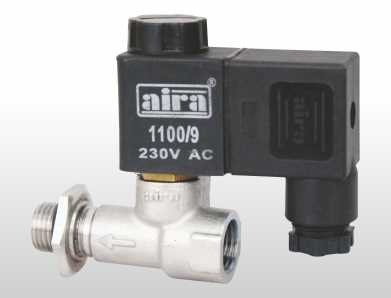Solenoid valves are essential components in many industrial applications. They control the flow of liquids and gases in various systems, including water treatment, HVAC systems, and manufacturing processes. In this article, we’ll discuss the different types of solenoid valves, their applications, and how they work.
Introduction to Solenoid Valves
Solenoid valves are electromechanical devices that control the flow of fluids or gases. They are made up of a solenoid coil and a valve body. The solenoid coil contains a wire coil that generates a magnetic field when an electric current passes through it. The valve body consists of an inlet and an outlet, which are connected to the system’s piping.
When the solenoid coil is energized, it generates a magnetic field that pulls a plunger or a piston inside the valve body. This movement creates a path for the fluid or gas to flow through the valve. When the coil is de-energized, the plunger or piston returns to its original position, closing the valve and stopping the flow of fluid or gas.
Types of Solenoid Valves
There are different types of solenoid valves available, each designed for specific applications. Some common types of solenoid valves include:
Direct-acting solenoid valves
Direct-acting solenoid valves are the most basic type of solenoid valve. They work by directly opening or closing the valve orifice. These valves are suitable for applications that require low flow rates and low-pressure differentials.
Pilot-operated solenoid valves
Pilot-operated solenoid valves use a small pilot valve to control the flow of fluid or gas through a larger valve. These valves are suitable for applications that require high flow rates and high-pressure differentials.
Normally closed solenoid valves
Normally closed solenoid valves are closed when the solenoid coil is de-energized. They are suitable for applications where safety is a concern, as they automatically shut off the flow of fluid or gas when power is lost.
Normally open solenoid valves
Normally open solenoid valves are open when the solenoid coil is de-energized. They are suitable for applications that require constant flow, such as irrigation systems.
Applications of Solenoid Valves
The solenoid valve is used in a wide range of applications, including:
Water treatment
In water treatment systems, solenoid valves control the flow of chemicals and water. They are commonly used in reverse osmosis systems, water softeners, and filtration systems.
HVAC systems
Solenoid valves are used in HVAC systems to control the flow of refrigerant and coolant. They are used in air conditioning units, heat pumps, and chillers.
Manufacturing processes
Solenoid valves are used in manufacturing processes to control the flow of liquids and gases. They are used in food and beverage production, pharmaceutical manufacturing, and chemical processing.
Working Principles of Solenoid Valves
The working principle of a solenoid valve is based on the interaction between magnetic fields and electric currents. When an electric current passes through a wire coil, it generates a magnetic field around the coil. The strength of the direction of the magnetic field depends on the direction and magnitude of the current passing through the coil.
Inside the solenoid valve, there is a plunger or piston that is connected to a valve disc or a diaphragm. When the solenoid coil is energized, it generates a magnetic field that attracts the plunger or piston toward the coil. This movement opens the valve and allows fluid or gas to flow through it.
The plunger or piston is held in place by a spring when the solenoid coil is not energized. When the coil is de-energized, the spring pushes the plunger or piston back to its original position, closing the valve and stopping the flow of fluid or gas.
The valve body contains an inlet and an outlet, which are connected to the system’s piping. The flow of fluid or gas through the valve is controlled by the position of the valve disc or diaphragm, which is connected to the plunger or piston.
In direct-acting solenoid valves, the plunger or piston directly controls the valve orifice. In pilot-operated solenoid valves, a small pilot valve controls the flow of fluid or gas through a larger valve.
In normally closed solenoid valves, the valve is closed when the solenoid coil is not energized. In normally open solenoid valves, the valve is open when the solenoid coil is not energized.
In conclusion, solenoid valves are essential components in many industrial applications. They are available in different types, each designed for specific applications. The working principle of solenoid valves is based on the interaction between magnetic fields and electric currents. Solenoid valves are widely used in water treatment, HVAC systems, and manufacturing processes to control the flow of fluids and gases. Understanding the types, applications, and working principles of solenoid valves can help you choose the right valve for your application and ensure reliable operation.


